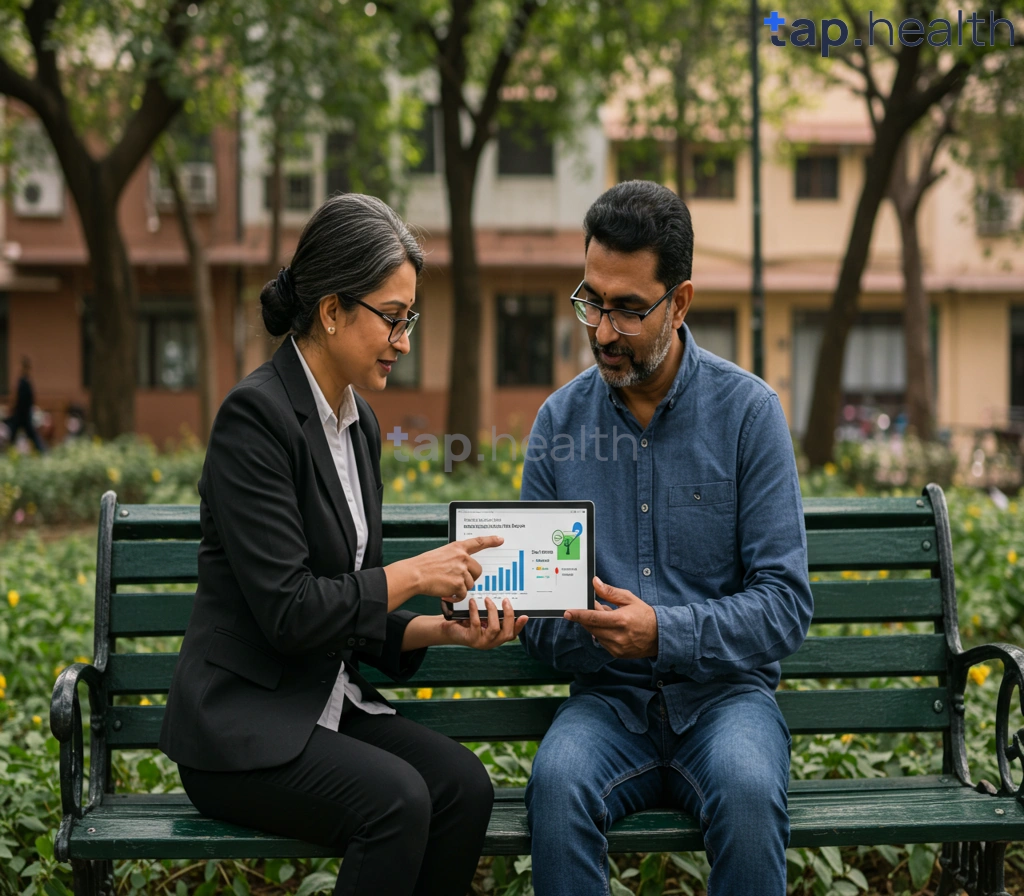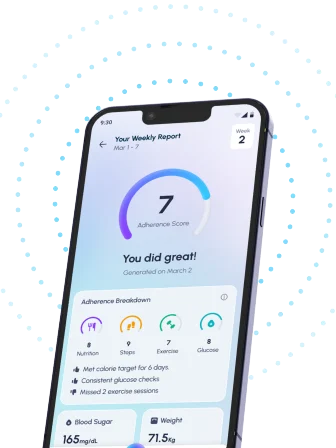Table of Contents
- Balancing Screen Time and Diabetes Management for Kids
- Protecting Your Child: A Guide to Diabetes and Tech Use
- How Much Screen Time is Safe for Children with Diabetes?
- Diabetes in Children: Tips for Healthy Screen Time Habits
- Child’s Well-being: Diabetes, Screen Time, and Healthy Choices
- Frequently Asked Questions
- References
Juggling the demands of modern life while ensuring your child’s well-being can feel overwhelming, especially when facing challenges like diabetes management. One area often overlooked in this delicate balance is screen time. Protecting your child’s well-being: Diabetes & Screen Time Balance is crucial for their physical and mental health. This blog post will explore the often-complex relationship between screen use, diabetes management, and overall child development, offering practical tips and strategies to help you navigate this important aspect of parenting. We’ll delve into how to set healthy boundaries and create a supportive environment that fosters both healthy habits and a happy childhood. Let’s work together to find that sweet spot!
Balancing Screen Time and Diabetes Management for Kids
A recent Indian government study screened 92,047 schoolchildren, revealing that 1,351 (1.467%) showed signs of potential diabetes. This alarming statistic highlights the urgent need to address children’s health in India and other tropical countries, particularly concerning the interplay between screen time and diabetes management. For children already diagnosed or at risk, striking the right balance is crucial.
Understanding the Risks: Screen Time & Diabetes
Excessive screen time contributes to a sedentary lifestyle, increasing the risk of obesity, a major factor in developing type 2 diabetes. The constant stimulation from devices also disrupts sleep patterns, affecting insulin sensitivity. In the hot and humid climate of many tropical regions, managing blood sugar levels already presents a unique challenge. Therefore, mindful screen time management is especially important for children in these areas.
Practical Tips for a Healthy Balance
Limit screen time: Encourage active play and outdoor activities, especially in the cooler parts of the day. Aim for a balance between physical activity and screen time, ensuring they are not mutually exclusive. Establish screen-free zones: Designate specific times and areas in the home as screen-free zones, such as mealtimes and bedrooms. Prioritize sleep: Adequate sleep is essential for regulating blood sugar levels. Create a consistent bedtime routine to promote healthy sleep habits. Educate and involve: Teach children about the importance of healthy eating, exercise, and diabetes management. Involve the entire family in making healthy lifestyle choices. Seek professional guidance: Consult a pediatrician or endocrinologist for personalized advice on managing screen time and diabetes in your child. Early intervention is key, especially considering the high prevalence indicated by the study of 92,047 school children. These challenges can also become more significant as children age, as highlighted in our article on Managing Diabetes as You Age: Challenges and Solutions.
Taking Action Today
In India and other tropical countries, proactively managing your child’s screen time and diabetes risk is paramount. By implementing these strategies and seeking professional guidance, you can significantly improve their well-being and quality of life. Remember, a healthy balance is key to a healthier future. Understanding how to manage other health factors, like cholesterol, is also important. For more information, see our article on How to Manage Cholesterol Levels with Diabetes?.
Protecting Your Child: A Guide to Diabetes and Tech Use
Understanding the Risks
Did you know children born to mothers with gestational diabetes are seven times more likely to develop Type 2 diabetes later in life? This startling statistic highlights the importance of proactive health management from a young age, especially in regions like India and other tropical countries where lifestyle diseases are increasingly prevalent. This includes mindful screen time management, a crucial factor often overlooked. Excessive screen time contributes to childhood obesity, a major risk factor for Type 2 diabetes. Balancing healthy habits with technology use is key to protecting your child’s well-being.
Practical Steps for a Healthier Balance
Incorporating regular physical activity into your child’s daily routine is vital. Encourage outdoor play, sports, or even simple walks—anything that gets them moving! Limit screen time to a reasonable amount, perhaps an hour or two daily, and encourage alternative activities like reading, playing board games, or engaging in creative hobbies. Monitor your child’s diet carefully, focusing on fresh fruits, vegetables, and whole grains, while limiting sugary drinks and processed foods common in many Indian and tropical diets. For families dealing with Tips for Parents of Kids with Type 1 Diabetes: Complete Guide, managing screen time and diet is especially crucial.
Creating a Supportive Environment
Remember, you’re not alone in this journey. Many families in India and tropical countries face similar challenges. Seek support from your pediatrician, diabetes educators, or local community groups. They can provide valuable guidance and resources tailored to your specific needs and cultural context. By working together, we can empower our children to lead healthier, happier lives, reducing their risk of developing Type 2 diabetes. Prioritizing their well-being is an investment in their future. It’s also important to be aware of the broader health implications of diabetes; learn more about protecting your heart with our guide on Protect Your Heart from Diabetes: 5 Essential Steps.
How Much Screen Time is Safe for Children with Diabetes?
Managing diabetes in children already presents significant challenges, especially in hot and humid climates common across India and tropical countries. Adding the complexities of screen time limits makes it even more crucial for parents to understand the balance. Approximately 35 per 10,000 U.S. youths have diagnosed diabetes, highlighting the global importance of this issue. While precise numbers for India and tropical regions may vary, the impact on children’s health remains significant.
Understanding the Challenges
Excessive screen time contributes to physical inactivity, leading to weight gain – a major concern for children with diabetes. Increased sedentary behaviour can negatively impact blood sugar control, increasing the risk of complications. The heat and humidity in many tropical regions can further exacerbate these issues, making physical activity more challenging and potentially leading to dehydration. It’s crucial to remember that every child is unique, and screen time limits should be tailored to their age, individual needs, and diabetes management plan.
Practical Tips for Balancing Screen Time and Well-being
Incorporate regular physical activity into your child’s daily routine. Prioritize outdoor activities during cooler parts of the day in tropical climates. Encourage active play and limit passive screen time. Use screen time as a reward for achieving health goals, such as maintaining healthy blood sugar levels and completing physical activities. Consider engaging your child in educational apps or games that promote learning and engagement without excessive sedentary behaviour. Consult with your pediatrician or a certified diabetes educator for personalized guidance tailored to your child’s specific needs and your region’s climate. As children get older, the challenges of managing diabetes can change. For insights into the specific needs of teenagers, see our article on Diabetes in Teenagers: Understanding the Impact.
Seeking Support in India and Tropical Countries
Remember, you’re not alone. Connect with local diabetes support groups and online communities to share experiences and learn from other parents facing similar challenges. Many organizations offer resources and education specific to managing diabetes in children within these regions, providing vital support and guidance for navigating the complexities of diabetes management and healthy screen time habits. Regular eye exams are also crucial for managing diabetes. Learn more about the importance of diabetic eye screening in our related article.
Diabetes in Children: Tips for Healthy Screen Time Habits
Managing diabetes in children, particularly in hot and humid climates prevalent across India and tropical countries, presents unique challenges. The added layer of screen time management is crucial for their overall well-being. Consider that globally, 1.2 million children and adolescents are living with type 1 diabetes (source), highlighting the urgency of this issue. Effective screen time management can positively influence blood sugar control, physical activity levels, and mental health.
Balancing Screen Time with Physical Activity
In warm climates, outdoor activities might be limited during peak sun hours. However, it’s crucial to find alternative times for physical activity. Early mornings or evenings offer cooler temperatures, enabling children to engage in sports or simply play outside. Prioritizing at least 60 minutes of physical activity daily is essential for healthy blood sugar regulation. This can be complemented by indoor exercises like yoga or dance during less-favorable weather conditions.
Mindful Screen Time Choices
Rather than completely restricting screen time, focus on making it more productive. Educational apps, interactive learning games, and virtual tours can engage children while minimizing sedentary behavior. Set clear limits and stick to a schedule, ensuring sufficient time for sleep, meals, and physical activity. Involve your child in creating this schedule for better compliance. Remember that excessive screen time can lead to eye strain, sleep disturbances, and increased risk of obesity, all of which can complicate diabetes management. For more information on managing other potential complications, check out our article on How to Protect Your Vision with Diabetes: Essential Eye Care Tips.
Family Engagement and Support
Educate the entire family about diabetes management and the importance of healthy screen time habits. Joint activities that limit screen time, such as cooking healthy meals or engaging in family games, can reinforce positive habits. Consider consulting a pediatrician or diabetes specialist for personalized guidance, tailored to the specific challenges faced in your region and climate. Regular check-ups and open communication are crucial for effective diabetes management and overall child well-being. For additional tips on effective diabetes management, you might find our article, 10 Proven Tips for Effective Diabetes Management, helpful.
Child’s Well-being: Diabetes, Screen Time, and Healthy Choices
Protecting your child’s health in tropical and Indian climates requires a careful balance of lifestyle factors, especially when considering the rising prevalence of diabetes. Did you know that daily consumption of sugary beverages raises the risk of developing diabetes by 26%? This statistic highlights the urgent need to address dietary habits and screen time in children, particularly within these regions where access to sugary drinks is often high.
Managing Screen Time
Excessive screen time contributes to a sedentary lifestyle, increasing the risk of obesity—a major factor in type 2 diabetes. In many Indian and tropical countries, children often have limited access to outdoor activities due to heat or other environmental factors. However, limiting screen time to a reasonable amount is crucial. Encourage outdoor play, even in the cooler parts of the day, and replace passive screen time with active games. Prioritizing physical activity helps regulate blood sugar levels and reduces the risk of diabetes.
Making Healthy Food Choices
Beyond screen time, diet plays a pivotal role. The high availability of sugary drinks and processed foods in many Indian and tropical countries presents a significant challenge. Encourage consumption of fresh fruits, vegetables, and whole grains. Limit sugary drinks and snacks, making conscious choices to reduce your child’s exposure to added sugars. This is particularly important given the strong link between sugary beverage consumption and a 26% increased diabetes risk. Managing diabetes effectively also involves understanding the impact it can have on mental well-being. For more information, read our article on The Impact of Diabetes on Mental Health.
Prioritizing Well-being in Hot Climates
In hot and humid climates, hydration is vital. Encourage your child to drink plenty of water throughout the day. Water is a healthier alternative to sugary drinks and helps maintain overall health. Remember, a balanced approach to diet and activity is key in preventing diabetes. By making smart choices concerning screen time and nutrition, you can significantly improve your child’s well-being. Getting enough quality sleep is also crucial for managing diabetes and overall health. Learn more in our article on The Importance of Quality Sleep in Managing Diabetes.
Take Action Today
Talk to your pediatrician about your child’s diet and activity levels. Consider enrolling your child in activities that promote physical activity and healthy habits. Small changes today can make a big difference in your child’s future health. Let’s work together to create a healthier tomorrow for our children in India and across tropical regions.
Frequently Asked Questions on Protecting Your Child’s Well-being: Diabetes & Screen Time Balance
Q1. What is the link between screen time and childhood diabetes?
Increased screen time often leads to a sedentary lifestyle, obesity, and poor sleep, all of which are major risk factors for developing type 2 diabetes in children.
Q2. How can I reduce my child’s risk of developing diabetes?
Focus on a balanced approach: limit screen time, encourage regular physical activity (especially during cooler hours in hot climates), ensure sufficient sleep, and promote a healthy diet. Family involvement is key.
Q3. My child loves screens; how can I limit their use effectively?
Establish screen-free zones and times, like during meals and before bed. Involve your child in setting screen time limits and finding alternative activities.
Q4. What role does physical activity play in preventing childhood diabetes?
Regular physical activity helps manage weight, improves insulin sensitivity, and contributes to overall health, reducing the risk of diabetes. Prioritize outdoor activities during cooler parts of the day in hot climates.
Q5. When should I seek professional help for my child regarding diabetes concerns?
Early intervention is crucial. Consult a pediatrician or endocrinologist if you have any concerns about your child’s weight, activity levels, or family history of diabetes. They can assess your child’s risk and provide guidance.
References
- Children with Diabetes : A resourse guide for families and school. : https://www.health.ny.gov/publications/0944.pdf
- A Practical Guide to Integrated Type 2 Diabetes Care: https://www.hse.ie/eng/services/list/2/primarycare/east-coast-diabetes-service/management-of-type-2-diabetes/diabetes-and-pregnancy/icgp-guide-to-integrated-type-2.pdf




